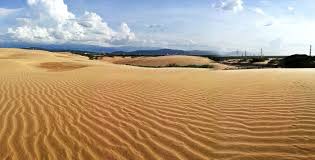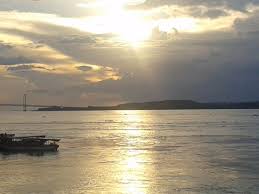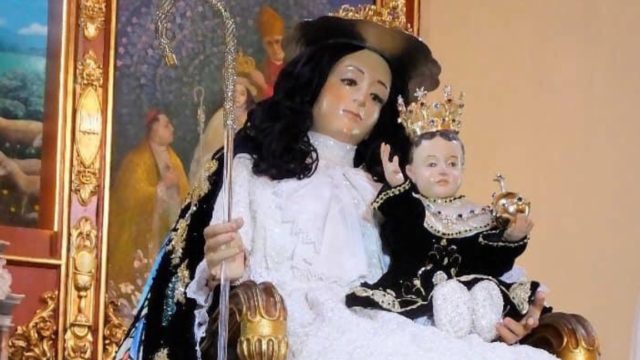
In many ways, Venezuela is a country that can shake hands with Costa Rica, you may wonder why? Both Latin American countries are full of infinite natural wealth and beauty … Let’s talk about Venezuela and its splendor.
Beyond the crisis that this country has been experiencing for some years now, everyone should be aware that this is an incredible nation, with warm people, who no matter where you come from, always offer its visitors a sincere greeting, a helping hand and a big hug.
A land where Christopher Columbus arrived in 1497, it is a country that has it all … 3000 kilometers of beaches, caribbean islands with crystal clear waters, giant waterfalls, vast rolling plains, amazing sand dunes and even snow capped mountains. Here you can decide where you want to go, who you want to meet, the possibilities are immense.
Falcon state.

It should be noted that UNESCO -United Nations Organization for Education, Science, and Culture-, has declared many places in the country as World Heritage Sites, among them is “Santa Ana de Coro y La Vela”, located in Falcón state, where colonial architecture is still preserved, also In Falcón state, there is also the “Médanos de Coro National Park” (giant Sand dunes that stretch for kilometers).
Canaima National Park-La Gran Sabana.
Another UNESCO natural heritage site consisting of more than 3 million hectares of grasslands and tropical jungles dotted by the giant “Tepuis” (high isolated rock formations, with vertical slopes and flat tops). Here is the Canaima Lagoon and also Angel Falls or Churun meru as the native Pemon indigenous people name it, considered the highest waterfall in the world.
Los Llanos.
The Venezuelan plains called “Los Llanos” covering the central and southwestern portions of the national territory are a vast natural region of wide grasslands stretching as far as the eyes can see, with immense seasonal lagoons and eye-catching sunsets The fauna in Los Llanos is very diverse and includes more than 200 bird species that color for kilometers on these plains, also iguanas, turtles, ocelots, monkeys, otters, anacondas, crocodiles, tapirs, capibaras, giant anteaters and wild horses. In addition to the crystal clear waters of its immense rivers flowing down from the Andes mountains.
Zulia state.
With its proud and empathetic people that are warm as the climate here, oil-rich Zulia state includes “Lake Maracaibo”, the largest fresh water lake in the world. Also the “Catatumbo Relampago”, a meteorological phenomenon unique in the world originating in the “Sierra de Perijá, consisting in permanent lighting flashing in the sky without ever ceasing.
An infinite mineral wealth.
Starting with the largest oil field in the world (the Orinoco Belt), having the highest concentration of proven Hydrocarbon reserves in the world and the third in natural gas. But also Venezuela has vast deposits of Iron ore, carbon, coltran (for computer manufacturing), uranium, aluminum, giant gold mines and also, among the biggest freshwater reserves on the planet.
The Andes Mountains.
Mérida states is a mountain paradise, its people called “Andinos” with pink cheeks from the cold and a warm smile, live a quiet, serene agricultural existence in tiny hamlets that dot the infinite mountain ranges. The Sierra Nevada National Park has the highest elevations in the country with glacial lagoons in the elevated land called the “Paramo” where snowfalls are frequent and that has many Snow-capped Peaks well above the 4000mts including the “Pico Bolívar” standing 4980meters above sea level. Boasting the highest, longest and most modern Cable Car system in the world, the “Teleférico Mukumbarí” is a once in a lifetime experience, reaching up to “Pico Espejo” with its “Virgen de las Nieves” at 4790m.a.s.l.
Venezuela’s Caribbean Islands.
“Margarita Island”, considered the Pearl of the Caribbean, also the islands of “Coche”, “Cubagua” and the “Los Roques archipelago”, along with more than 300 smaller islands boasts calm crystal clear waters and white sands. Where water sports, like scuba diving, fishing, windsurfing can be practiced year-round.
3000Kms of paradisiacal beaches along its coastline.
To describe the diversity present in its vast coastline would take volumes, here we’ll just name some of the most famous and visited of Venezuela’s beaches: “Choroní”, “Bahía de Cata”, “Cuyagua”(yes…for Surfers), “Litoral Central”, “Mochima National Park”, “Morrocoy National Park”, and the list just goes on and on (tap in any of these names in Google images and be ready to be amazed).
The Mighty Orinoco River.

Considered as one of the most virgin and richest natural territories on the planet. The “Orinoco river basin” stretches from its origin deep in the Amazon jungle all the way to its Delta in the Atlantic ocean. With lush, unexplored tropical jungles and rainforests, it is home to many native indigenous tribes that preserve their ancestral ways of life, like the “Waraos” and the “Yanomamis”, and where instead of roads, communication is by means of numerous inland waterways called “Caños” and instead of cars, canoes (most with outboard motors) are the means of transportation.
Lara State.

You can not miss the state of “Lara” with its capital city, “Barquisimeto” called the “Musical Capital of Venezuela” where typical music and song are alive in every corner of this vibrant city. Also in the spiritual aspect, it is home to the Christian Patron “La Divina Pastora”, that every January 14th congregates a massive pilgrimage of faithful only exceeded in numbers by the Guadalupe in Mexico and Fatima in Portugal.
Venezuela is all this and much more, a nation with people full of love and inexhaustible faith. Today it goes through difficult moments, but these storms sooner than later go away, and glorious dawn will come.

